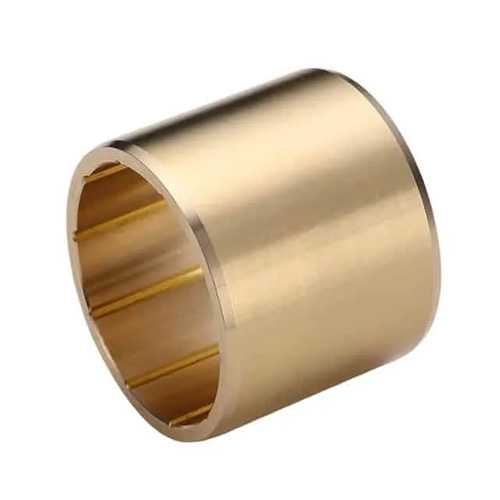Product Name: Manganese Bronze Bushes
Sizes, Applications, Alloys, Specifications, and FAQs
Introduction: Manganese bronze bushes are essential components in various industries, offering durability, corrosion resistance, and excellent wear characteristics. Whether you’re an engineer, a manufacturer, or just someone curious about these versatile components, this comprehensive guide will provide you with all the information you need. In this article, we will explore manganese bronze bush manufacturing, applications, alloys, specifications, technical data, and frequently asked questions.
Manufacturing Process: Manganese bronze bushes are typically manufactured through the centrifugal casting process. This method ensures a uniform distribution of alloying elements and minimizes impurities. The bushes are created by rotating a mold while pouring molten manganese bronze, resulting in a cylindrical shape that is then machined to meet specific requirements.
Sizes: Manganese bronze bushes come in various sizes to cater to the diverse needs of different industries. Common size ranges include inner diameters from 1/4 inch to 16 inches or more, outer diameters from 1/2 inch to 20 inches, and lengths from 1 inch to 24 inches or longer. Custom sizes can also be produced to meet unique project demands.
Applications: Manganese bronze bushes find applications in a wide range of industries due to their excellent properties. Some common applications include:
- Marine Industry: Manganese bronze bushes are used in propellers, ship components, and offshore equipment due to their resistance to seawater corrosion.
- Agriculture: They are employed in farm machinery like tractors and plows for their high load-bearing capacity.
- Aviation: In the aerospace sector, manganese bronze bushes are utilized in aircraft landing gear, bearings, and engine components.
- Construction: They can be found in heavy equipment like cranes and earthmovers.
- Mining: Manganese bronze bushes are crucial in mining equipment where heavy loads and abrasive environments are common.
- Oil and Gas: These bushes are used in drilling equipment and valve components.
Alloys: Manganese bronze bushes are made from different alloys. Common alloys include:
- C86300 (SAE 430B): This alloy is known for its excellent wear resistance, making it ideal for heavy-load applications.
- C86200 (SAE 430A): It offers good corrosion resistance and is often used in marine applications.
- C86500: This alloy provides high strength and is suitable for heavy machinery components.
Specifications: Manganese bronze bushes must adhere to certain specifications, such as ASTM B505 and SAE J462. These specifications ensure quality and consistency in their manufacturing and use.
Technical Data Sheet: For detailed technical information, refer to the manufacturer’s technical data sheet for the specific manganese bronze alloy you plan to use. These sheets provide information on mechanical properties, chemical composition, and more.
FAQs:
Q1. Are manganese bronze bushes suitable for high-temperature applications? A1. Manganese bronze bushes have good heat resistance, but their suitability for high-temperature applications depends on the specific alloy and the temperature range. Consult the manufacturer’s recommendations for your particular use case.
Q2. Can I get custom-sized manganese bronze bushes for my project? A2. Yes, many manufacturers offer custom-sizing services to meet your project’s unique requirements.
Q3. What maintenance is required for manganese bronze bushes? A3. Manganese bronze bushes are low-maintenance. Regular inspection for wear and proper lubrication is typically sufficient to ensure their longevity.
Q4. How do I choose the right alloy for my application? A4. The choice of alloy depends on factors like load, corrosion, and temperature. Consult with a materials engineer or the manufacturer to select the best alloy for your needs.
In conclusion, manganese bronze bushes are versatile components used in various industries for their durability and corrosion resistance. Whether you’re a manufacturer, engineer, or someone looking to understand these essential components, this guide provides you with the information you need to make informed decisions about their selection and use.


